Imagine this. You’ve just left a grey, rainy country, ready for sunshine and long days outside. You land in Tenerife, expecting blue skies… but you step out of the airport and find yourself in the north, where it’s green, cool, and a little misty.
It’s still beautiful, but not quite the island life you imagined.
I honestly believe the Canary Islands are the best winter escape in Europe, but I’ll let this blog explain why. If I had to choose, I’d rather stay somewhere where the sun is almost guaranteed than risk being caught in grey weather, and perhaps rain, but of course, that’s me.
The question I get from so many digital nomads and remote workers? It’s this one: “Should I visit the north or the south of Tenerife?”
Both sides are special in their own way, and I’ve spent time living in each. So, let me tell you what they’re really like <3
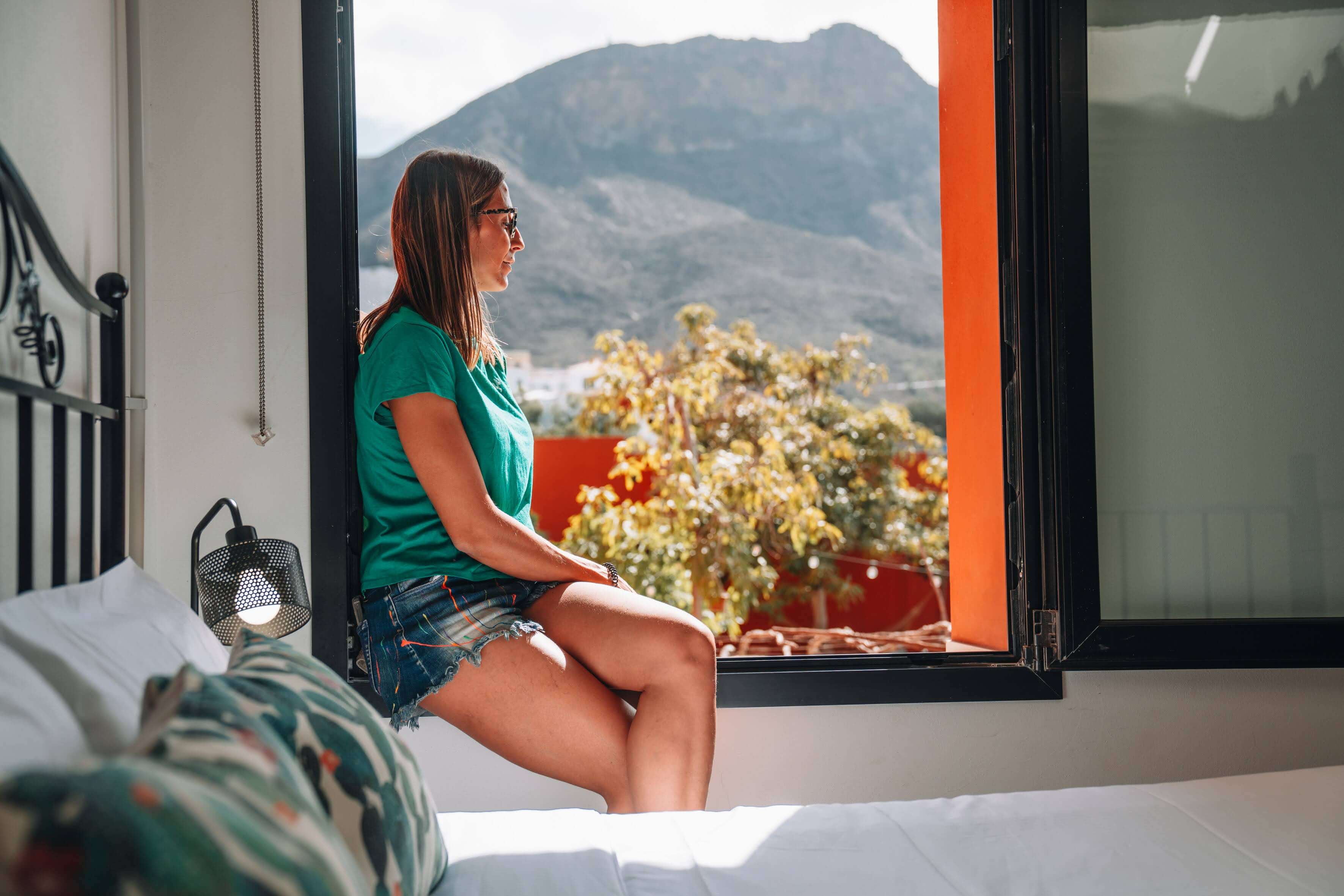
Tenerife South vs North: How each side feels
Pick the rhythm that matches your lifestyle.
The South in one word: sunny
If I had to describe the South in one feeling, it would be that sense of calm that comes from waking up to sunshine almost every day. This is the Tenerife most people imagine: warm mornings, golden beaches, and that steady rhythm where life feels lighter.
Down by the coast, the weather is famously reliable. According to official figures, the south gets around 300 days of sunshine a year, which is why so many people choose it as their base in winter. You can walk out in shorts and cholas (this is what we refer to as ‘flipflops’ in the canaries) in December, go for a swim, grab a coffee by the sea, and forget what day of the week it is.
But here’s something I always tell our colivers at Cactus: Tenerife has microclimates everywhere (in case you’d like to know what a microclimate is, here is more info based on research). Drive just 15 minutes inland, to Valle San Lorenzo or Adeje town, and you might find a bit more cloud or cooler air. It’s still warm and pleasant all year, just with a slightly different mood. The mountains hold the clouds sometimes, and I actually love those softer, quieter days too.
By the way, if you’re curious what makes Tenerife such a special place to work from, you can read more in our guide on why Tenerife is the best hotspot for digital nomads.
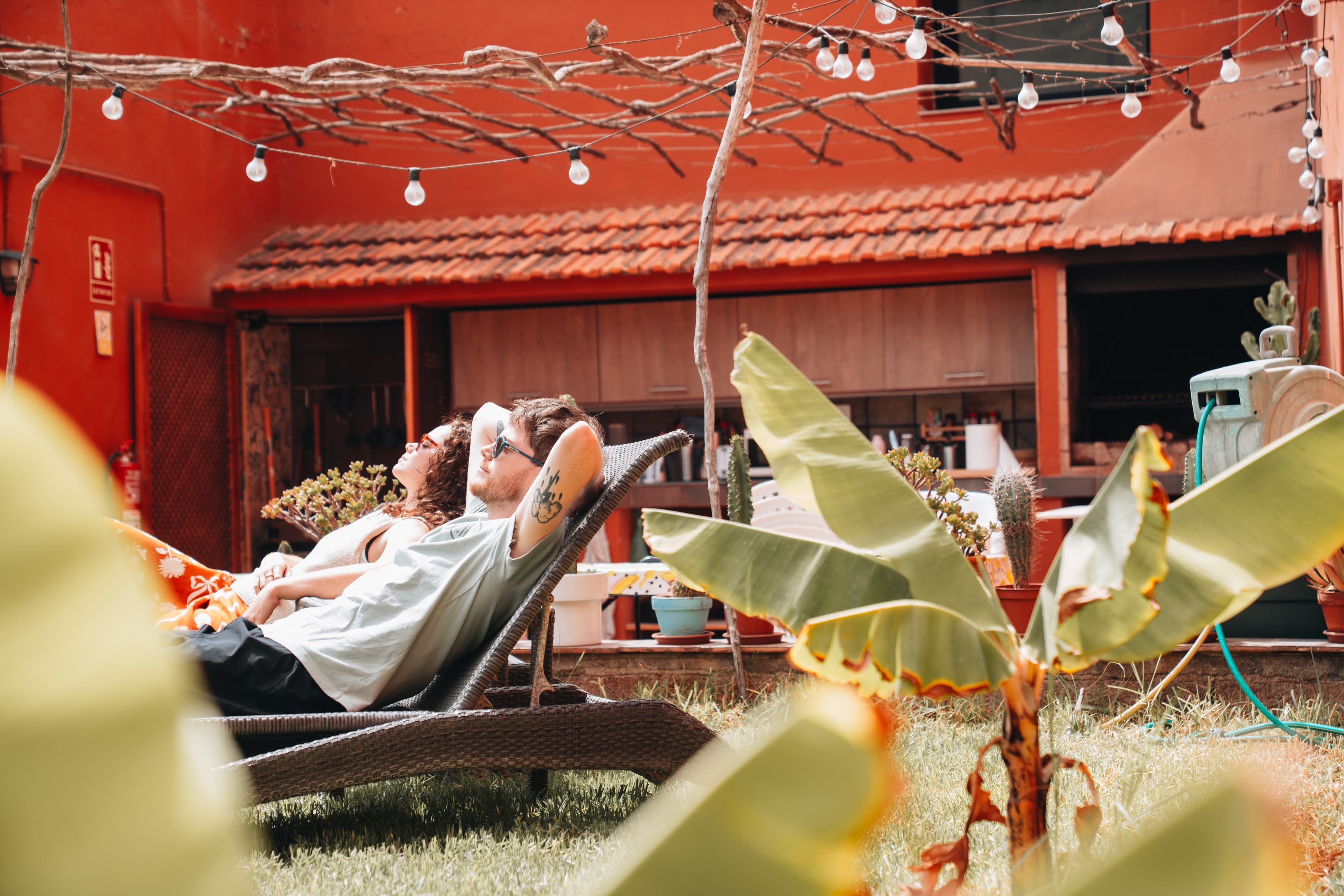
The North in one word: wild
When I visit, I always notice how alive nature feels here. The laurel forests of Anaga are like walking into another world, full of quiet trails, ferns, and trees covered in moss. Every time I go, I think, “this is what untouched Tenerife must have looked like hundreds of years ago.” You’ll also see endless banana plantations and black-sand beaches that look dramatic against the waves.
The towns in the North have their own charm too. La Laguna feels young and historic at the same time, cobbled streets, colourful buildings, little cafés filled with students and artists. La Orotava, on the other hand, feels timeless, with wooden balconies, old plazas, and the kind of calm that makes you slow down without even noticing.
What I love most about this part of the island is how connected people are to their traditions. Life here moves at its own pace, guided by the seasons, local festivals, and the land itself. It’s a place for long walks, good food, and simple moments that remind you why you came to Tenerife in the first place.
If you’re someone who’s drawn to culture, history, and nature, and don’t mind cloudy days, the North will pull you in.
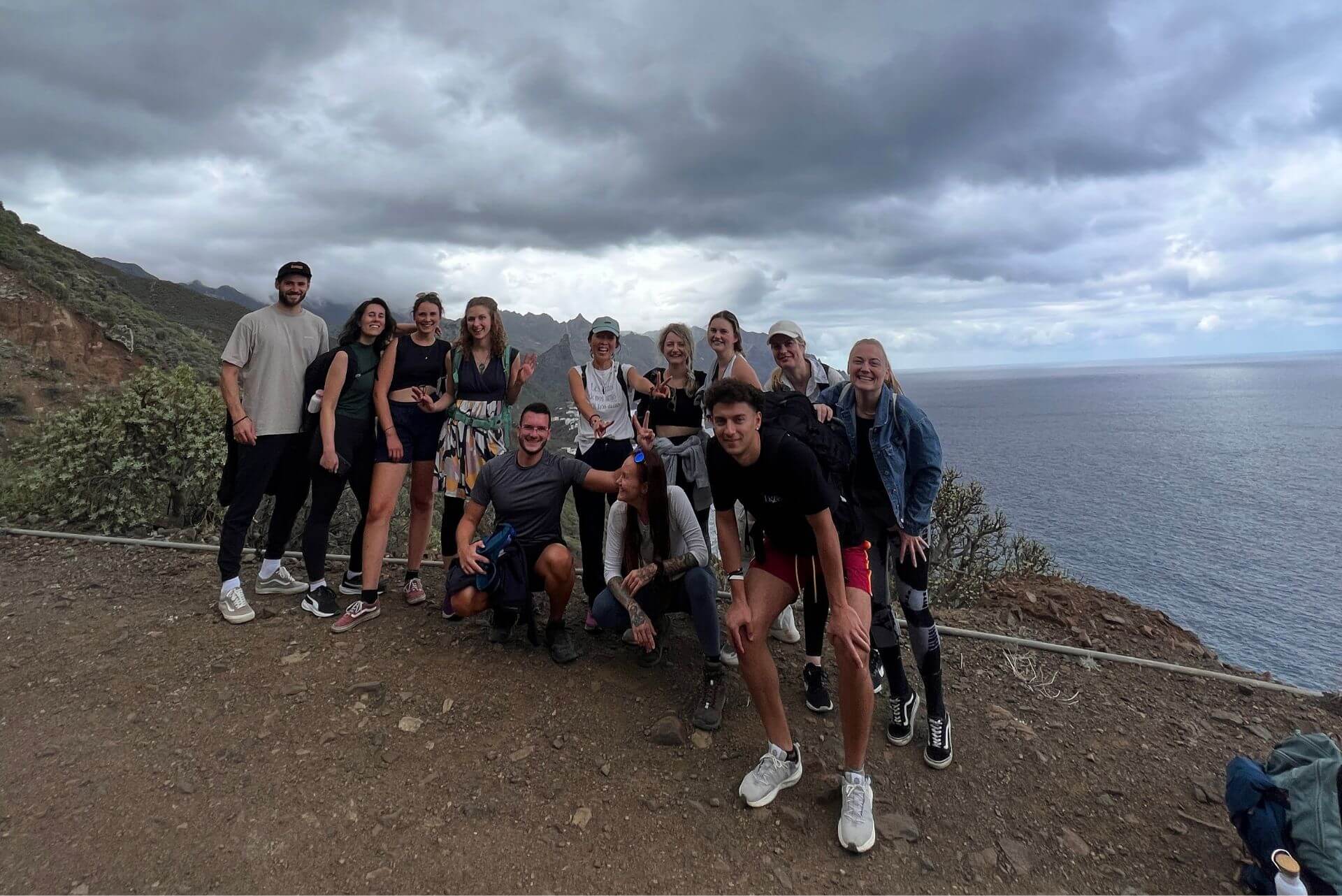
Weather and seasons
Tenerife is small, but the weather can feel like two different islands.
One of the first things you’ll notice here is how quickly the weather changes. Drive 20 minutes and it can feel like you’ve flown to another country.
In the North, the climate is cooler and more humid. From November to March, you can expect some rain, mist rolling through the forests, and evenings where you’ll want a jumper indoors. This is why the North is so green; the laurel forests and banana plantations need that extra moisture to thrive.
The South, on the other hand, is where most people go chasing the sun. From November to March, daytime temperatures usually sit between 20–25°C, which makes it one of the best places in Europe for winter living. That said, even in the South, you’ll sometimes see clouds inland, especially if you’re staying a little higher up in the mountains.
Altitude plays a big role here too. Mount Teide changes everything. Once you’re above about 800 metres, the weather can flip: one moment sunshine, the next clouds. In winter, Teide often gets a dusting of snow, a surreal sight when the beaches below are still warm (this is how it looked last April).
In summer (June–September), the whole island heats up. The difference between North and South is less noticeable, with both sides enjoying long, hot days.
If you’re planning a long stay, it’s worth reading our guide on the top 5 things to do in Tenerife in Winter, which dives deeper into what you can expect in Winter. For up-to-date details about the weather, you can also check the weather reports from the BBC, both for the South and the North.
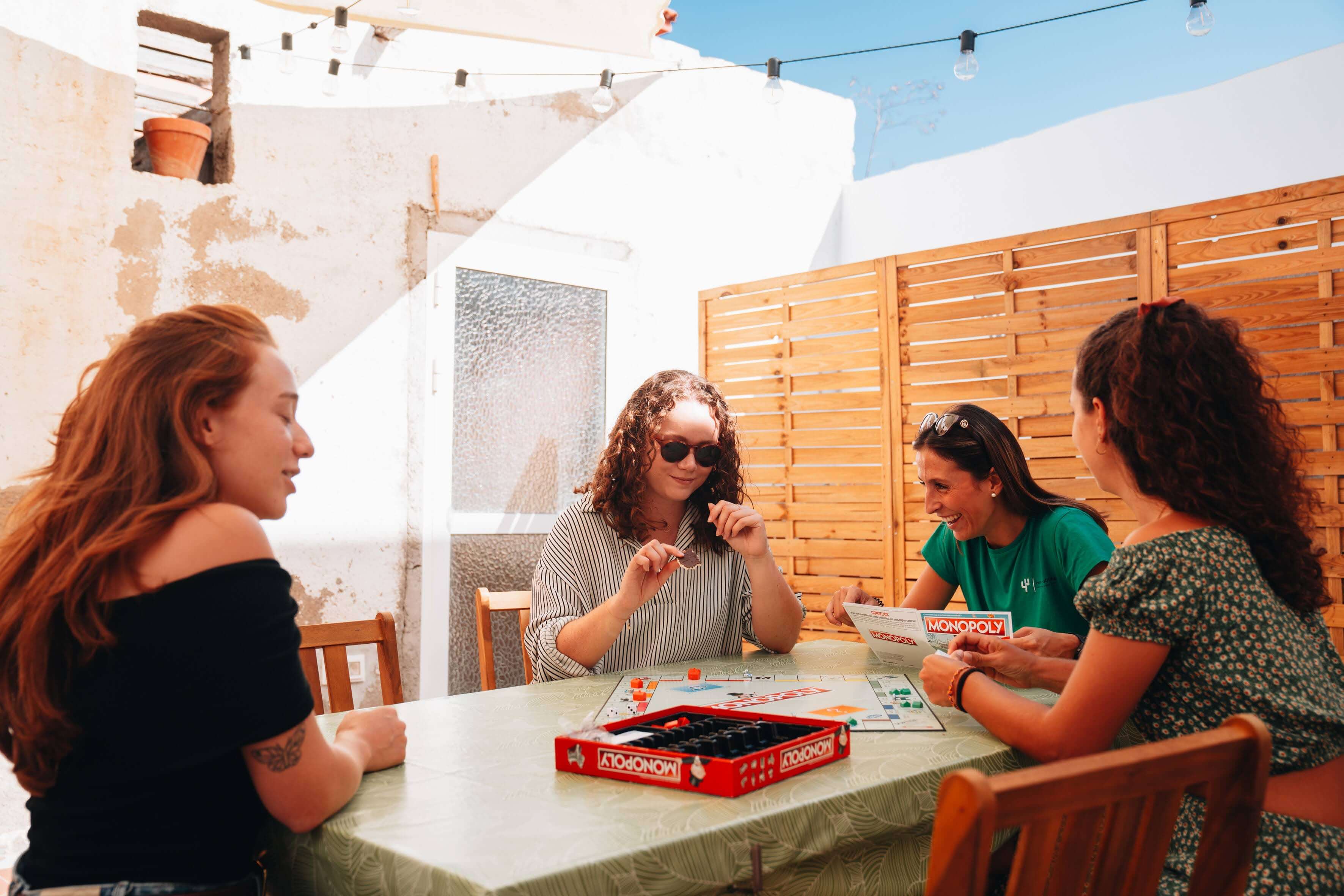
Tenerife beaches and sea conditions
Beaches are one of the things that make Tenerife so special. The coastline changes a lot as you move around the island, and the feel of the South is very different from the North, and vice-versa.
Beaches in the South
The South is where you find the classic sunny beach life. This is the side of the island that people imagine when they picture Tenerife: sun and sand.
One of the most popular spots is Playa del Duque in Costa Adeje. It’s a wide, golden beach lined with sunbeds, with plenty of cafés and shops just behind. It feels polished and comfortable, the kind of place where you can spend a whole afternoon without needing to move far.
A very different one is El Médano. Mostly known for its strong winds, this beach is always dotted with colourful kites flying high above the water. It’s the island’s hub for kite and windsurfing, but even if you don’t surf, the energy is infectious. The town around it has a creative, bohemian feel that attracts travellers who like a more laid-back rhythm.
Then there’s Los Gigantes, one of the most dramatic spots on the coast. Here, the cliffs rise almost vertically from the sea, creating a backdrop that makes the small volcanic beaches feel even more powerful. Many people come to Los Gigantes not just for the beach but also to take boat trips, sailing out to see dolphins or simply to look back at the cliffs from the water.
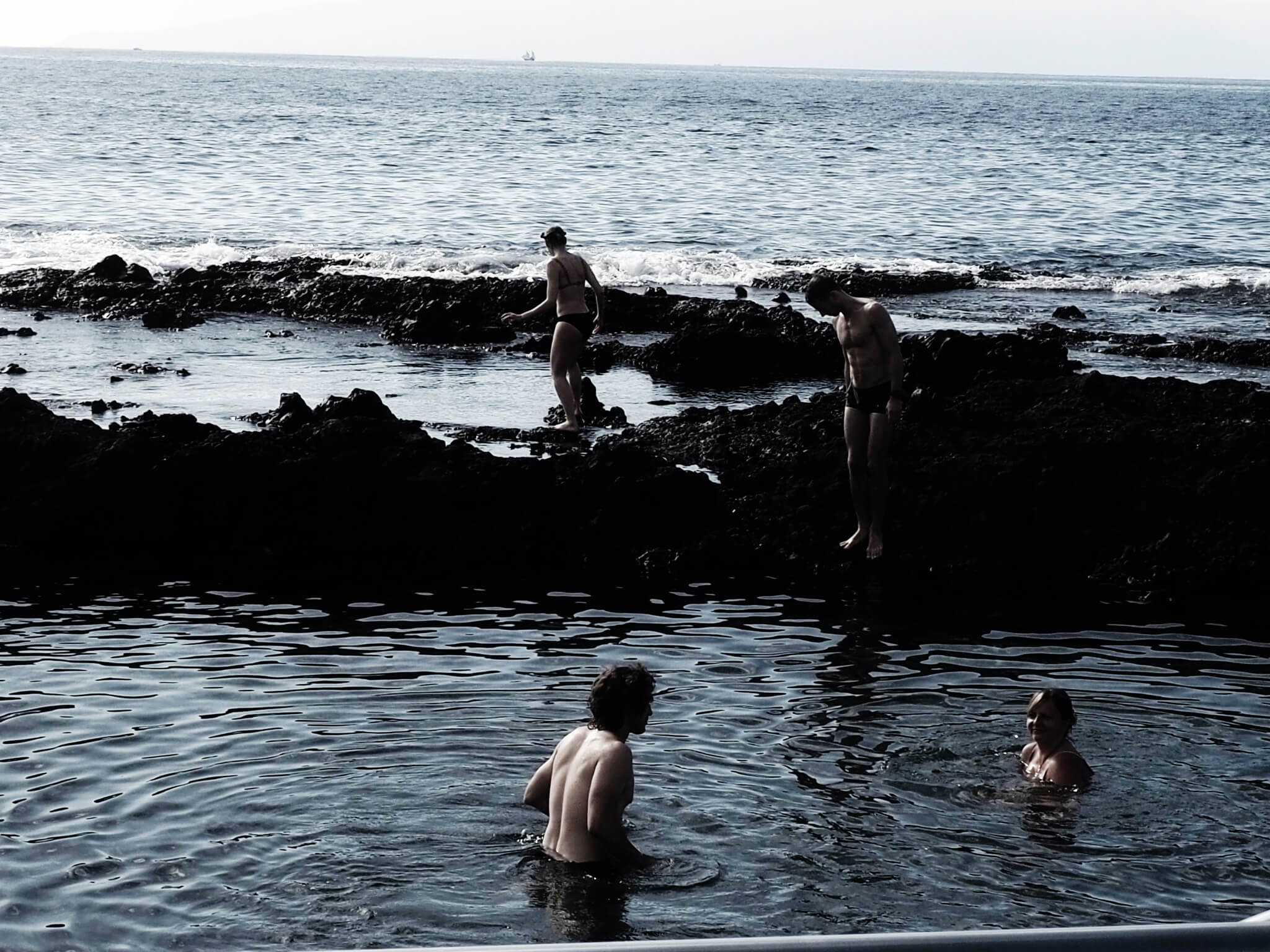
Beaches in the North
The North is wilder. The coastline is more rugged, the waves stronger, and the beaches are often framed by volcanic rock. It feels less polished than the South, but more natural.
Playa de Benijo is one of my favourite places in the North. It’s wild, quiet, and feels far from everything. The road to get there winds through Anaga Rural Park, with views so beautiful you have to stop for photos.
Down by the coast, the beach opens into black sand and strong waves. It’s not ideal for swimming, but for sunsets, it’s magic. Some people come here to disconnect completely, others just to feel that sense of freedom. There’s even a small restaurant nearby where you can sit with a drink. It’s raw and simple, exactly what makes Benijo so special.
Playa de las Teresitas is the calm side of the North. It’s just outside Santa Cruz, with soft golden sand brought all the way from the Sahara and water so still it looks like a pool. The breakwater keeps the waves away, so it’s ideal for swimming or just floating in the sun.
It’s one of those beaches where you spend the whole day relaxing under the palm trees. There are showers, toilets, and a few beach bars for snacks and cold drinks, which makes it easy to stay from morning till sunset.
And finally, Garachico. It’s one of those places that stays with you. It doesn’t have a long sandy beach, but its natural pools carved into old lava rock are lovely for swimming. The seawater flows naturally, calm and clear, and locals come here all year round to cool off.
Wherever you go, the sea is never far away. The South gives you the comfort of calm waters and sunshine, while the North offers wild beauty and hidden swimming spots. All of these spots show just how much variety Tenerife packs into one island.
No matter which side you choose, the ocean is always close. And if you want more than a beach, take a look at our guide on the Best things to do in Tenerife.
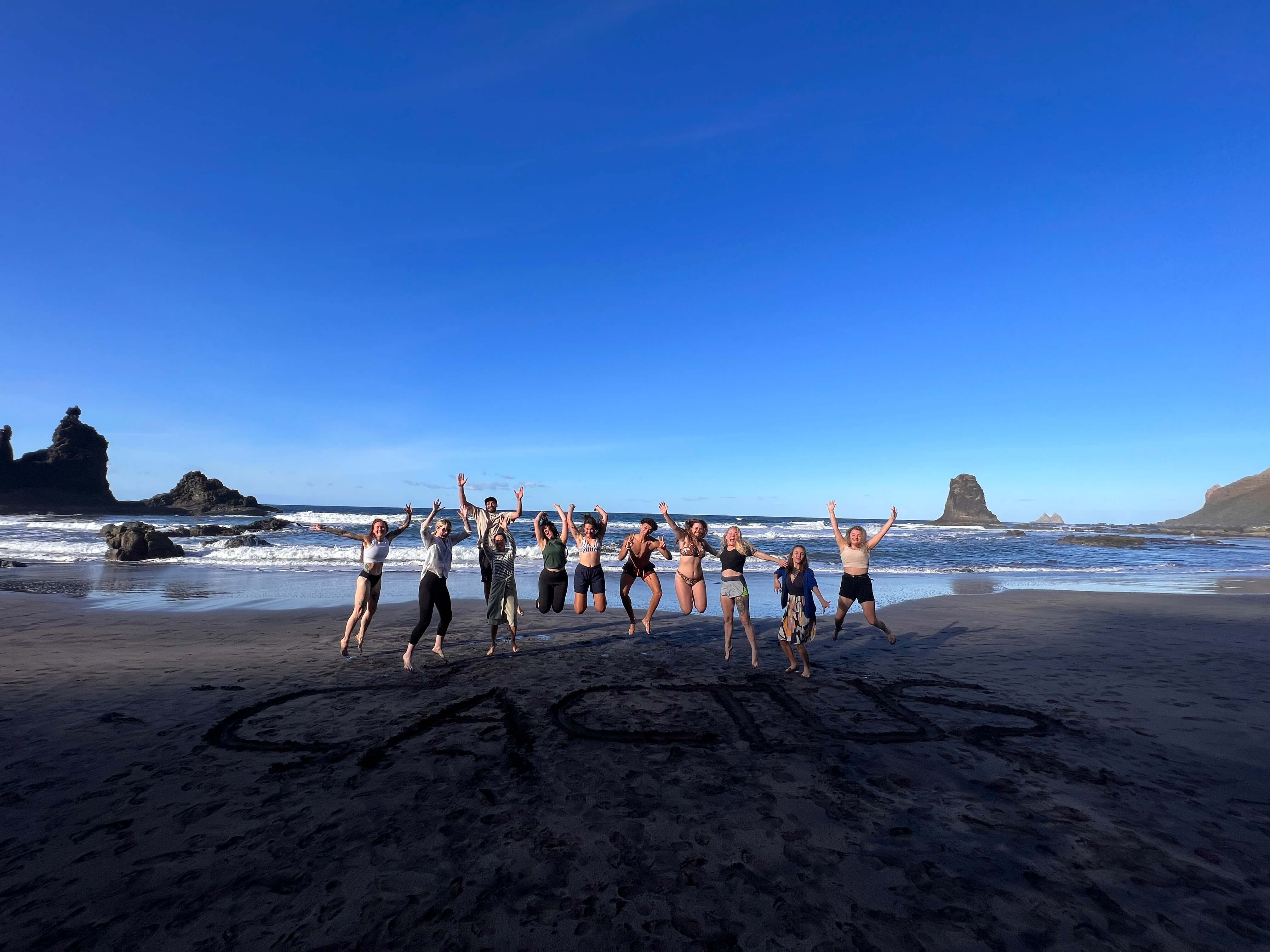
Nature and hiking trails in Tenerife
If you love hiking, the North will spoil you.
One of the best things about Tenerife is how easy it is to step into nature. The island is small, but the landscapes change quickly, you can go from misty forests to dry volcanic paths in less than an hour.
In the North, the scenery feels wild and green. The trails here take you through places that look untouched, with views that stop you in your tracks. Anaga Natural Park is like another world: ancient laurel forests, stone paths that link tiny villages, and mist that makes everything feel magical. The Teno mountains are just as dramatic, with ridges that fall straight into the sea. The Masca gorge is one of the most famous hikes, a steep, winding descent that ends right by the ocean. And in the Orotava Valley, the pine forests open up to show you Teide standing tall in the distance.
The South has a different character. It’s drier, more open, and shaped by volcanic rock. The trails here often give you big views over the coast. Barranco del Infierno is a favourite, a canyon walk that ends with a hidden waterfall. Roque del Conde is tougher, but the panorama from the top makes every step worth it. Montaña Roja, near El Médano, is an easy climb where the red rock meets the blue sea. And if you start from Vilaflor, you can hike right into Teide National Park, walking past lava fields and high pine forests until you reach the scenic views.
Whether you prefer long, challenging hikes or simple walks with a view, Tenerife has something for every pace. It’s part of the rhythm of life here, mornings at the laptop, afternoons on the trail.
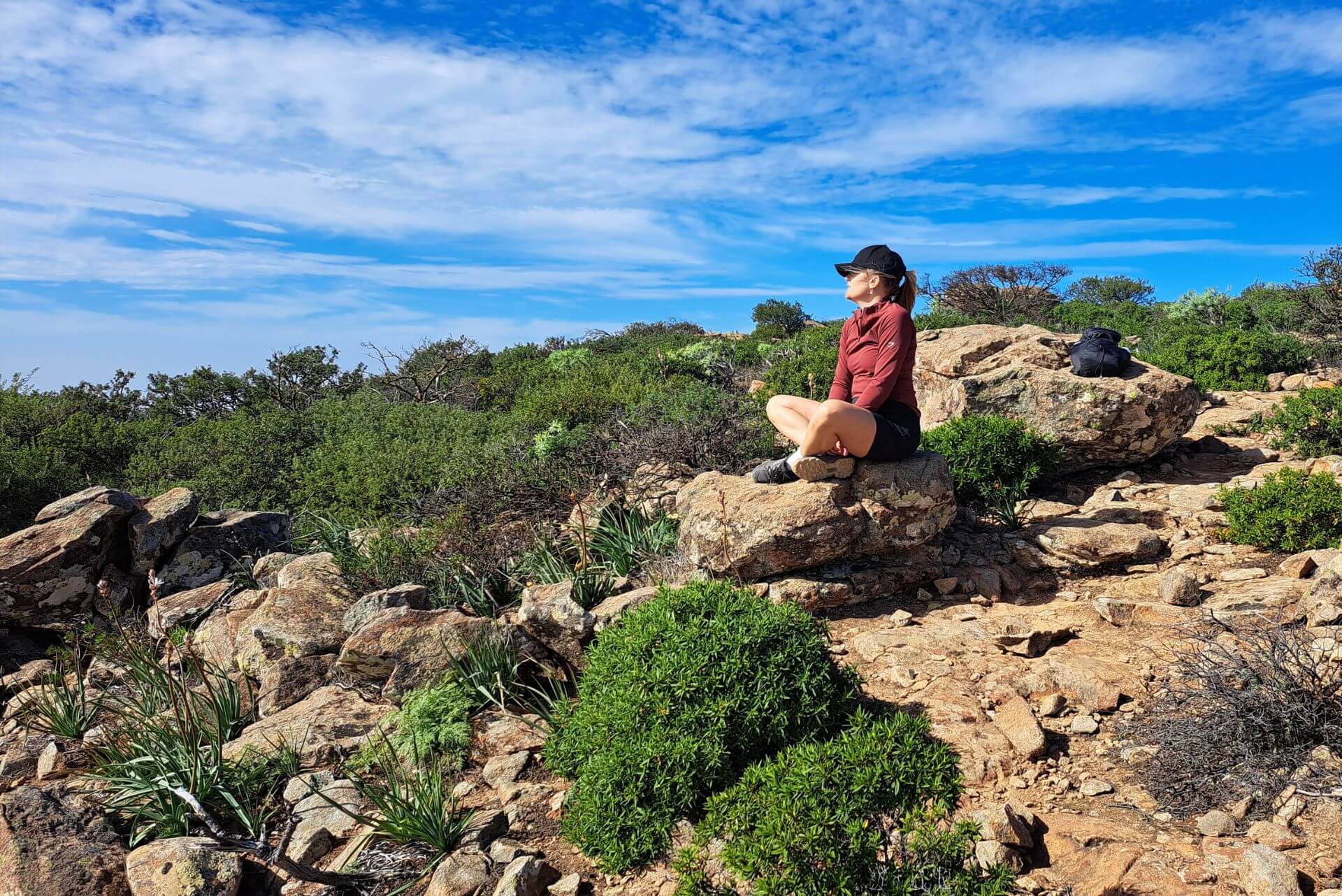
Things to do beyond the beach
You’ll never run out of options in Tenerife.
Tenerife has so much more to offer than beaches. Whether you like nature, food (you must definitely try the local restaurants, ‘Guachinches’), or local culture, there’s always something new to try. Each side of the island has its own energy and rhythm.
In the North
The North is made for slow days and quiet adventures.
If you’re looking for something calm, I recommend the Jardín Botánico in La Orotava. It’s full of tropical plants, tall trees, and shaded paths. You can wander for hours, enjoying the peace and the view of the ocean below.
Nearby, La Laguna is one of those towns that instantly makes you slow down. The streets are lined with colourful old houses, small cafés, and friendly faces. It has a creative atmosphere because of the university, but it still feels local and full of history.
Wine lovers will also enjoy this part of the island. Around Tacoronte, Icod de los Vinos, and La Orotava, you’ll find vineyards growing unique local varieties that thrive in the cooler weather. You can stop by for tastings, meet the families who run them, and enjoy a glass surrounded by the hills.
At night, the North becomes a great place for stargazing. If you drive up toward Teide National Park, the sky opens up above you. Mount Teide, a UNESCO World Heritage Site, is also considered one of the best places in the world for observing the night sky thanks to its high altitude, clear air, and minimal light pollution. These conditions create a truly privileged viewing experience, with views of the cosmos and even the Teide Observatory visible from certain spots. On clear nights, it feels like the whole island is glowing. On others, you can even see the Milky Way with your eyes.
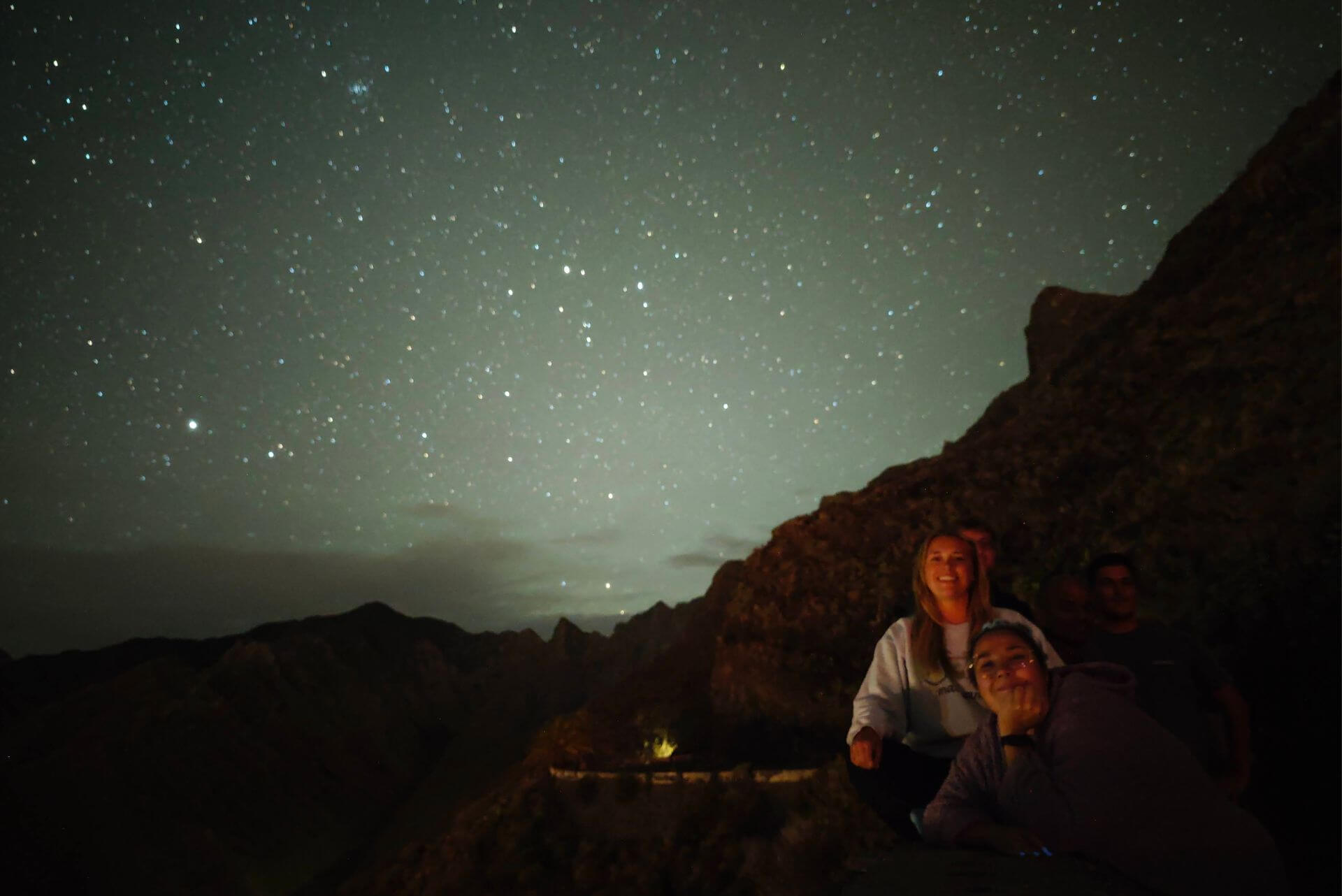
In the South
The South has a more active vibe. The sea is calm, the weather is dry, and there’s always something happening.
One of the best experiences here is whale and dolphin watching. Boats leave all year from Puerto Colón in Costa Adeje, and many tours focus on observing the animals in a respectful way. Seeing dolphins swim beside the boat or hearing a whale come up for air is something you’ll never forget.
If you like fun and adventure, Siam Park in Costa Adeje is a must. It’s one of the top water parks in Europe, surrounded by tropical gardens with slides, lazy rivers, and pools to relax in. It’s easy to spend a full day here.
The South is also great for golf, with courses that have wide ocean views and perfect weather all year round.
If you prefer something slower, you can take boat trips to small beaches, go snorkelling with turtles, or kayak along the cliffs. Paddleboarding at sunset is another simple but amazing way to end the day.
No matter which side of the island you choose, Tenerife makes it easy to live well. You can work in the morning, explore in the afternoon, and end the day with a glass of wine and the sound of the sea.

Nightlife and evenings
Do you want concerts or clubs?
When the sun sets, Tenerife doesn’t slow down. The island has many ways to enjoy the evening, whether you want a night of music and dancing or something quiet under the stars.
In the South
The South is where you’ll find the liveliest nightlife. Along the coast, especially around Costa Adeje, Los Cristianos, and Las Américas, evenings are full of energy. There are beach clubs with sunset DJs, karaoke bars that stay open late.
One of the most popular shows on the island is Pirámide de Arona, home to History: The Evolution of Music. It’s a large-scale live performance with dancers, singers, and lights that tell the story of music through time. Even if you’re not usually into shows, it’s worth seeing once for the atmosphere alone.
Closer to our coliving in Adeje, there’s also the Auditorio de Adeje, just a five-minute walk from the house, where you can catch more local cultural events, from folklore singing and Canarian dancing to comedy nights.
If you prefer something simpler, many seaside towns have small bars and live music nights where you can sit with a drink and enjoy the ocean breeze. The nightlife here can be as social or as calm as you want it to be.
In the North
The North has a completely different kind of evening. Here, the nights feel more cultural and local. In Santa Cruz, the Auditorio de Tenerife is the island’s main stage for opera, dance, and classical concerts. The building itself is stunning, and its program changes every season with performances from around the world.
In La Laguna, you’ll find a younger, more creative vibe. The old streets come alive after dark with terraces, wine bars, and small music venues. It’s the kind of place where you can wander, have tapas with friends, and end up listening to live jazz in a hidden courtyard. For a few ideas, check out this list of the best bars in La Laguna.
If you prefer quiet nights, head to Puerto de la Cruz for an evening walk along the promenade, or drive up the hills for stargazing. The skies in the North are some of the clearest in Europe, and on the right night you can see more stars than you ever imagined.
Life in Tenerife naturally shifts with the seasons too, and the evenings reflect that. If you’re curious about how life feels throughout the year, you can read more about it in our blog on Spring in Tenerife & La Gomera.
Whether you love concerts, quiet sunsets, or late-night laughter with new friends, there’s always something happening after sunset in Tenerife.
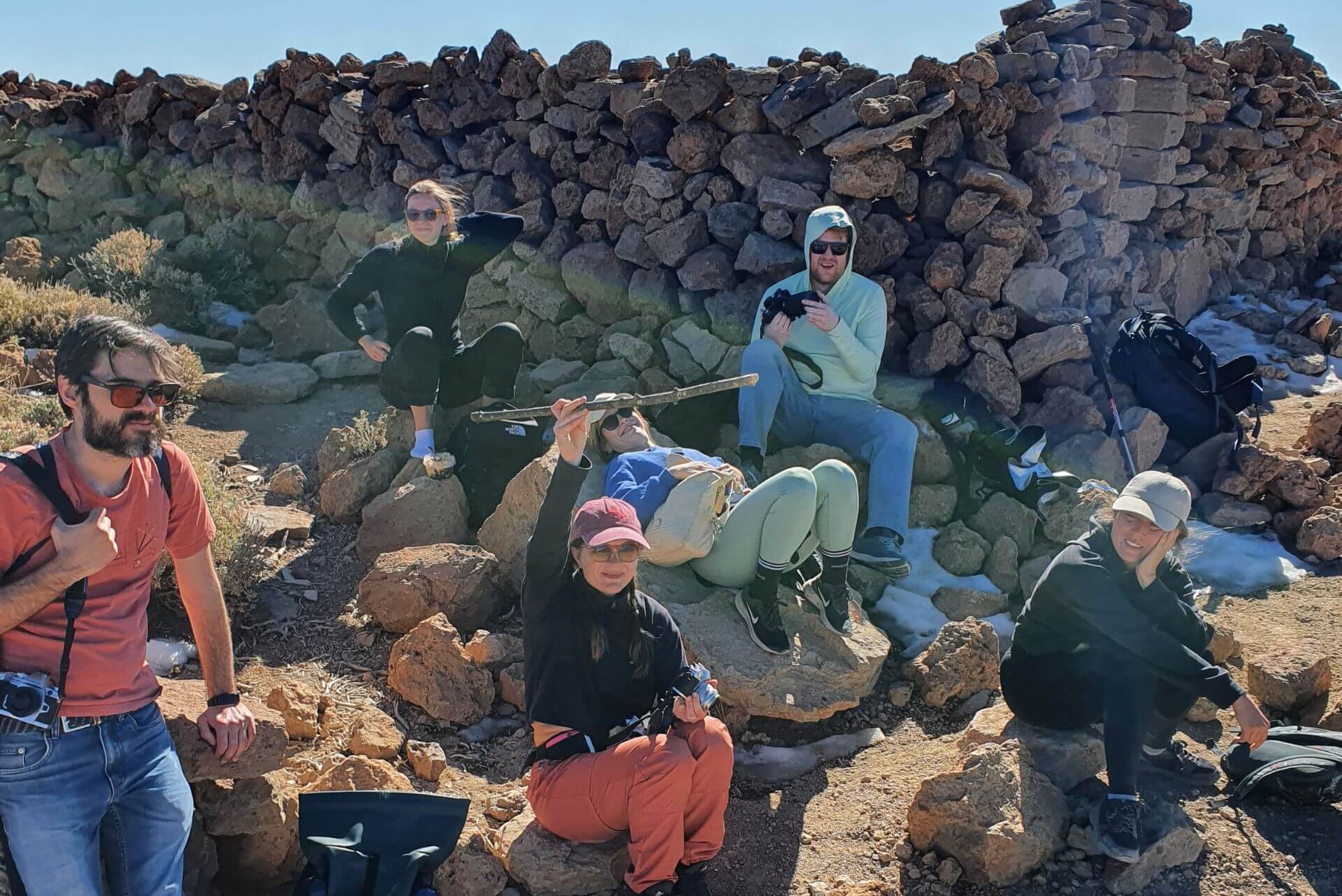
Remote work corner
A good base makes working here feel easy.
Tenerife has become one of Europe’s favourite spots for digital nomads, good Wi-Fi, warm weather, and a lifestyle that balances work and rest.
In the South, places like Adeje, Los Cristianos, Las Américas, and El Médano are full of life. You’ll find coworking cafés, gyms, and beaches close enough for a quick swim after work. The North feels slower, towns like Santa Cruz, La Laguna, and Puerto de la Cruz also are great places to work from.
At Cactus Coliving, we’ve built homes in Valle San Lorenzo, La Gomera, and Adeje for people who want connection, comfort, and balance.

Getting around
The island is small, but if you’re taking buses, it requires some patience.
One thing I love about Tenerife is how easy it is to get around. You can drive from north to south in about an hour, and the views change so much it feels like crossing a few different worlds in one trip.
I usually tell people to rent a car if they can; it gives you the freedom to stop at viewpoints, little cafés, or hiking trails whenever you feel like it. Parking is easy most of the time, though in old towns like La Laguna, I usually park just outside the centre and walk in. It’s part of the charm.
If you don’t drive, the green TITSA buses are reliable and comfortable, just slower if you’re heading to smaller villages.
Quick selector
Here’s the short version.
If you’re still deciding which side of Tenerife fits you best, here’s how I usually explain it.
Choose the South if you want:
- warm weather all year round
- calm beaches and easy swimming
- a social lifestyle with restaurants, cafés, and nightlife
Choose the North if you want:
- cooler weather, especially during winter
- hiking trails and forests
- historic towns and local traditions
The best part is that you don’t really have to choose. In just an hour you can cross the island and experience both sides. That’s what makes Tenerife such a great base for long stays, it’s easy to find balance here.
If you want to explore Spain (mainland or here in the canary islands) and thinking about other places to live and work, you can also take a look at our guide to the best colivings in Spain.
A little note to end on
At the end of the day, whether you’re staying in the north or the south, it’s about finding what fits your lifestyle.
Some people start in the South for sunshine and then move North for the forests. Others do the opposite. The beauty of this island is that in just one hour, you can switch sides and experience both.
So the answer? Stay long enough to enjoy both sides of Tenerife.
Curious what daily life looks like here?
Have a peek at instagram, and if you’re thinking about joining us, feel free to get in touch.
We’d love to welcome you.
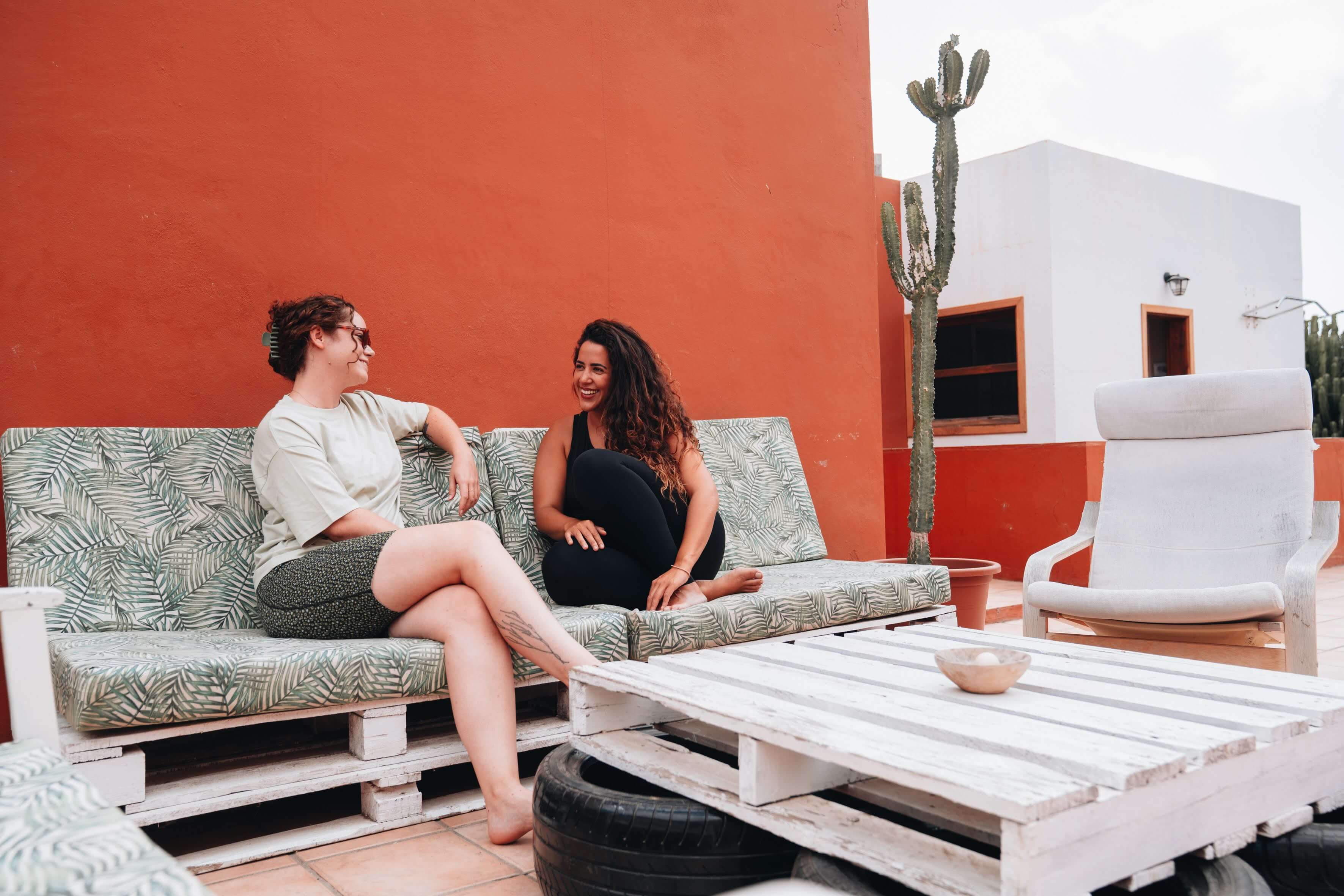

.svg)
.png)


.jpg)


